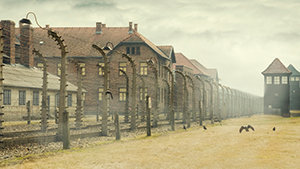
-
HOME
-
WHAT IS STANDOur Mission Our Values Our Help Contact
-
WHAT WE FIGHT FORReligious Freedom Religious Literacy Equality & Human Rights Inclusion & Respect Free Speech Responsible Journalism Corporate Accountability
-
RESOURCESExpert Studies Landmark Decisions White Papers FAQs David Miscavige Religious Freedom Resource Center Freedom of Religion & Human Rights Topic Index Priest-Penitent Privilege Islamophobia
-
HATE MONITORBiased Media Propagandists Hatemongers False Experts Hate Monitor Blog
-
NEWSROOMNews Media Watch Videos Blog
-
TAKE ACTIONCombat Hate & Discrimination Champion Freedom of Religion Demand Accountability
The Arolsen Holocaust Archives—A New Book Awakens Both Our Sense of Beauty & Responsibility
As a Scientologist, I have had to endure some truly idiotic things said about my religion. With the wealth of information available online on who we are, what we believe and what we do, to read some of the things that certain individuals have written—well, an author must be pretty damn lazy or spiteful to neglect looking at the facts, to neglect looking at truth. Because the truth is there.
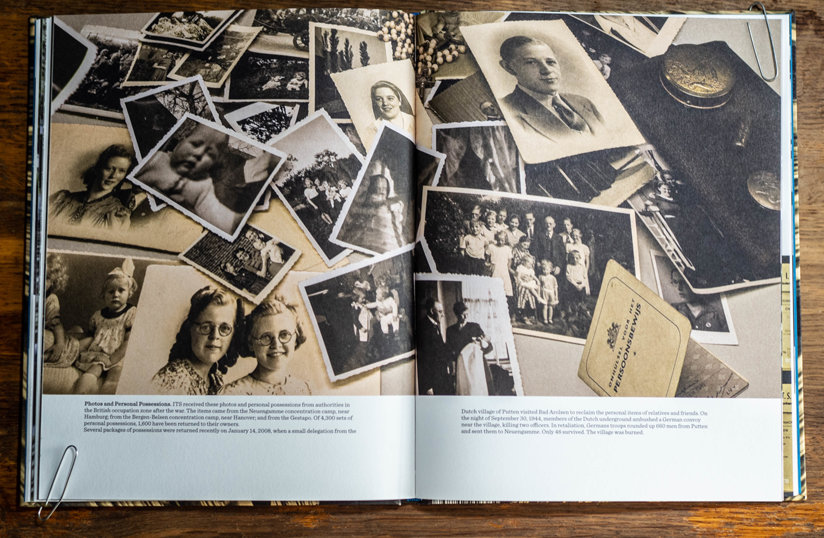
Around the same time that I was reading a piece of anti-Scientology misinformation, a friend sent me a passage from a 1950s-era Holocaust-denier who was making a point about the pandemic. Whatever point this writer was making was completely undermined by my knowing this man was clearly, as a denier of the Holocaust, unable to confront truth. Then, just as now, there was ample evidence proving that the Holocaust was real. And as far as I’m concerned, if this guy was too full of his own opinions to actually seek out—and see—facts, he was incapable of getting to the truth about any other subject.
It got me thinking about the hard evidence for the Holocaust. I remembered reading about a place in Germany that housed the millions of meticulous records the Nazis kept of all the Jews and others that had been “processed” as part of Hitler’s Final Solution. A few Google searches later, I discovered that a book had recently been released on the subject.
That’s how, in a roundabout way, those musings about fact vs. fiction led me into what follows—a brief account of my experience with the Arolsen Holocaust Archives.
“It was a heart-rending experience, with periods of nausea, disbelief and utter shock.”
The Arolsen Archives, by photographer Richard Ehrlich, became available on Amazon in February 2022. It’s an unusual work, like a small coffee table book, exquisitely designed with photos, text and illustrations, published by Steidl, a house that specializes in fine art works. The book’s aesthetics are disarming, making the subject matter accessible—even inviting—until you grasp the reality behind what you are reading.
The Arolsen Archives contain over 50 million original documents, many from concentration camps. Though the site has been available to researchers, no photographer had ever captured those documents on film and Richard Ehrlich, a photographer from California, was the first in the Archive’s history to be granted access. He spent four days visually cataloging the 27 kilometers (16 miles) of files and documents, having to take frequent breaks from the smell of musty paper, and the constant reminder of death.
d7dd61ec-90cc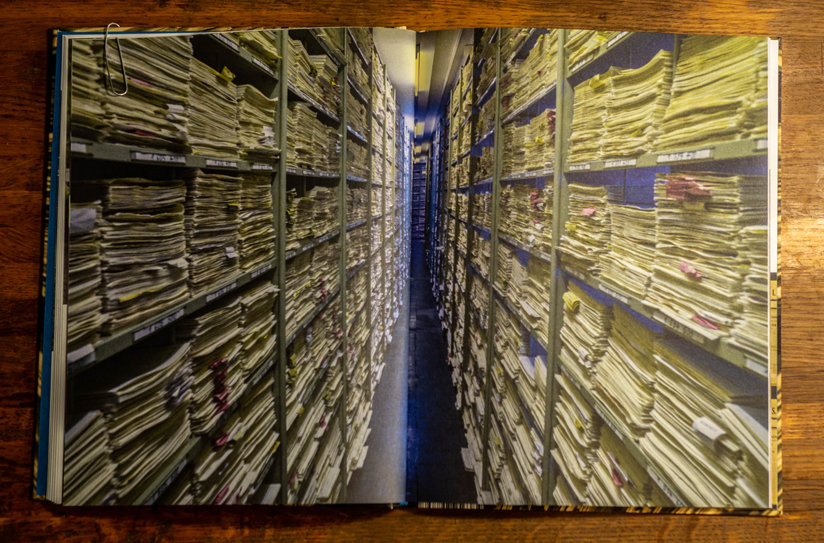
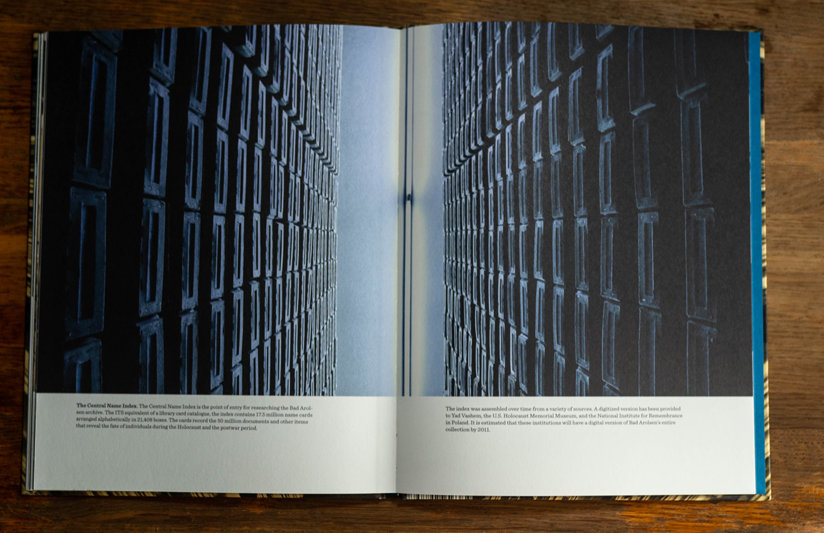
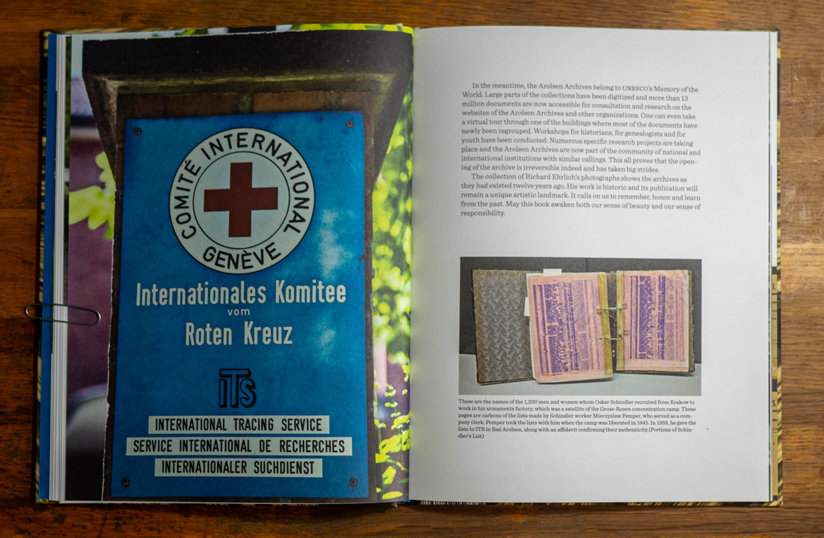

“It was a heart-rending experience, with periods of nausea, disbelief and utter shock,” writes Ehrlich. “What shocked the conscience into head-shaking disbelief was the meticulous saving and cataloging of seemingly mundane documents, which in fact represented human beings in living hell. The documentation of the numbers of lice removed from prisoners’ scalps to combat typhus in the camps, or the Wannsee Conference invitation for the ‘Final Solution’ with the words ‘Breakfast Served,’ were and are beyond human comprehension or understanding.”
The book was difficult to get through, and I found myself taking breaks just like Ehrlich did.
They are proof of what happens when bigotry, fanaticism and blind obedience go unchecked.
As Reto Meister, former director of the archive, wrote in the preface to the book: “May this book awaken both our sense of beauty and our sense of responsibility.”
It did that for me. It made me resolve to teach tolerance and empathy. To fight for truth. To ensure defamation against any religion is answered and countered with levelheaded facts—so that no other religion or people experiences the atrocities this book catalogs.
From the book: “In the preface to The Drowned and the Saved, [Holocaust survivor] Primo Levi shares a cynical warning given by an SS soldier to the prisoners at Auschwitz: ‘No matters how this war ends, we have won the war against you. No one will be left to testify, but even if one of you does survive, the world will not believe you. There might be suspicions, discussions, historical research, but there will be no certainty, because we will destroy both you and the evidence. And even if some evidence should remain and some of you do manage to survive, people will say the events you describe are too monstrous to be believed: they will call them exaggerations of Allied propaganda, and they will believe us, who will deny everything and not you. We are the ones who will dictate the history of the concentration camps.’
“The very existence of the Arolsen Archives proves this SS guard wrong: not only has the evidence not been destroyed—far from it in fact, as many records document the incredible minutia of the Nazis’ recordkeeping—but the various Holocaust archives and collections of oral history testimonies from survivors ensure that the memory of the Holocaust endures and that its history is well-researched and well-documented. These archives create an indelible trace and fulfill a responsibility toward history and memory.”
“Today, in times when antisemitism resurfaces, when Nazi and racist ideologies are making a comeback, when Shoah deniers become more numerous and when ‘being different’ is reason to be excluded and attacked, Richard Ehrlich’s photographs are the important antidote,” wrote Meister in the book. “They are proof of what happens when bigotry, fanaticism and blind obedience go unchecked. Through their artistic beauty and pureness they also remind us that humanity possesses the qualities of compassion and reason, and that we are meant to live in justice, dignity and harmony.”







